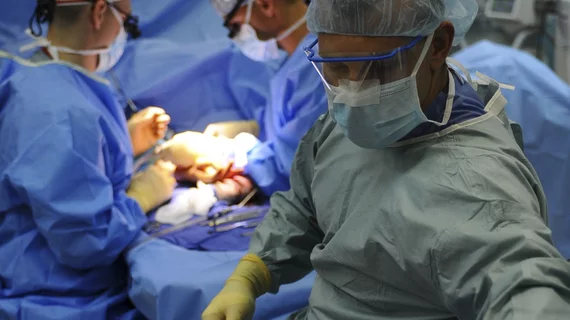New DCD heart transplant technique could reduce risk of serious injury
Since the first U.S. deceased after circulatory death (DCD) heart transplant in late 2019, there has been ongoing research to determine the best way to utilize this new source of donor hearts. Researchers at Stanford University School of Medicine recently published a study in JAMA Network Open about their use of the "beating heart" transplant procedure using DCD organs in 10 patients.[1] They found it to be safe and associated with key benefits.
Why the beating heart method was needed
DCD hearts are different from typical donor hearts. These donors demonstrate brain function that is incompatible with life, so do not meet all criteria for brain death. Heart transplants have historically been dependent on organs donated after brain death or irreversible loss of brain function. In the case of a DCD donation, a patient is removed from life support and, if their heart stops beating within a certain period of time, they are declared dead and their heart is removed from their body.
"The beating heart method involves cannulation of the donor heart while it is perfused from the perfusion platform and then switching to perfusion from the recipient cardiopulmonary bypass circuit in an uninterrupted fashion," the authors explained. "Then, implantation is performed with the allograft beating, removing the second arrest and, with it, the warm and cold ischemic periods typically associated with conventional DCD heart transplantation."
Researchers had previously believed DCD transplants might be exposing the heart to multiple bouts of ischemia reperfusion injury that contribute to the high rates of postoperative extracorporeal membrane oxygenation (ECMO) usage. They hoped the beating heart method could make those concerns a thing of the past.
Beating heart method impresses researchers
The DCD heart transplantations all took place at a single academic medical center from October 2022 to August 2023. All recipients were male, the mean age was 51.2 (13.8) years, and 7 of them had idiopathic dilated cardiomyopathy.
Overall, all 10 patients survived, and the new technique avoided a second cardioplegic arrest in every case. No patients required ECMO or any other type of mechanical circulatory support postoperatively. Graft survival was 100%. At the time of publication, no patients have been listed for retransplantation.
"This case series found that the beating heart transplantation was successful in 10 of 10 patients, with no initiation of postoperative mechanical circulatory support," the authors concluded. "Uninterrupted coronary perfusion through implantation may protect the heart from the additional ischemia reperfusion injury typically associated with DCD heart transplantation compared with brain death donation, which may contribute to the rates of postoperative mechanical circulatory support use after DCD heart transplantation."
The group emphasized that these results could have a big impact for institutions using DCD donors for heart transplantation going forward.

